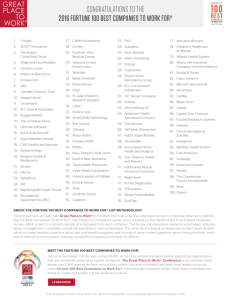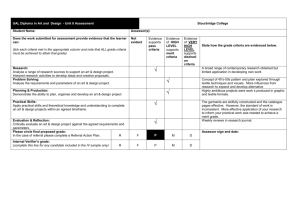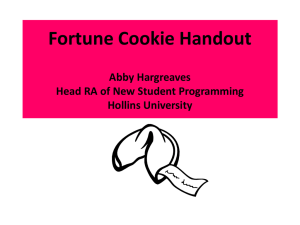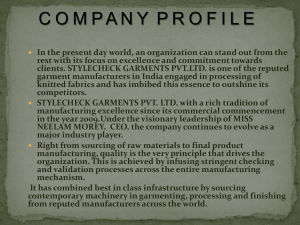Case Study –Fortune Garments
advertisement
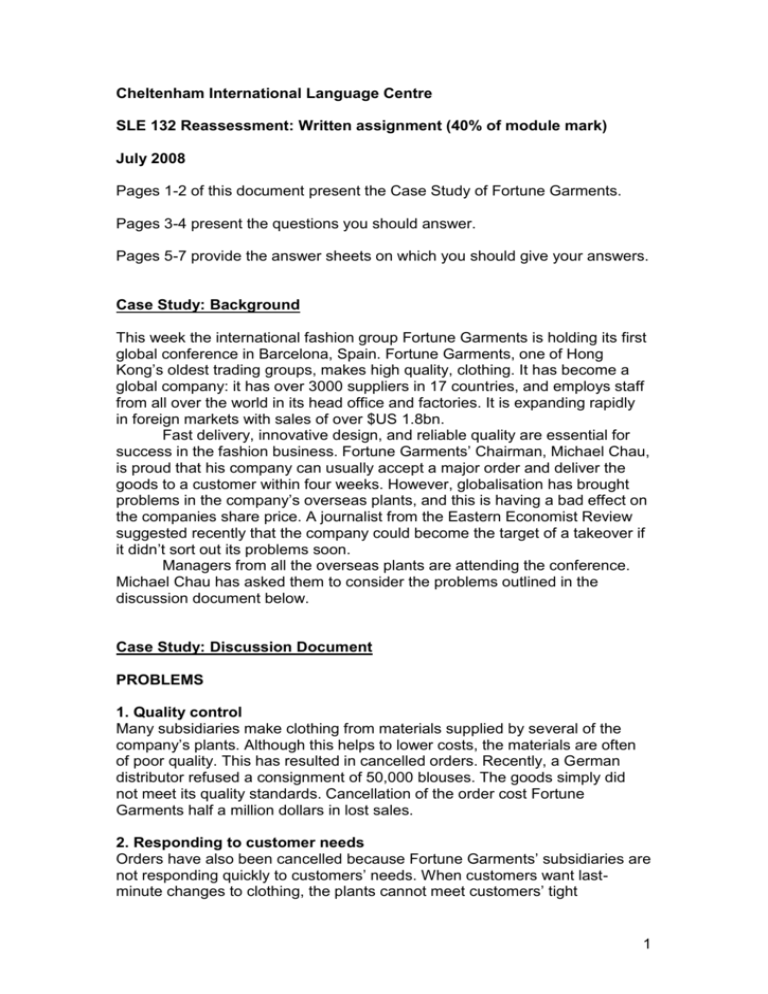
Cheltenham International Language Centre SLE 132 Reassessment: Written assignment (40% of module mark) July 2008 Pages 1-2 of this document present the Case Study of Fortune Garments. Pages 3-4 present the questions you should answer. Pages 5-7 provide the answer sheets on which you should give your answers. Case Study: Background This week the international fashion group Fortune Garments is holding its first global conference in Barcelona, Spain. Fortune Garments, one of Hong Kong’s oldest trading groups, makes high quality, clothing. It has become a global company: it has over 3000 suppliers in 17 countries, and employs staff from all over the world in its head office and factories. It is expanding rapidly in foreign markets with sales of over $US 1.8bn. Fast delivery, innovative design, and reliable quality are essential for success in the fashion business. Fortune Garments’ Chairman, Michael Chau, is proud that his company can usually accept a major order and deliver the goods to a customer within four weeks. However, globalisation has brought problems in the company’s overseas plants, and this is having a bad effect on the companies share price. A journalist from the Eastern Economist Review suggested recently that the company could become the target of a takeover if it didn’t sort out its problems soon. Managers from all the overseas plants are attending the conference. Michael Chau has asked them to consider the problems outlined in the discussion document below. Case Study: Discussion Document PROBLEMS 1. Quality control Many subsidiaries make clothing from materials supplied by several of the company’s plants. Although this helps to lower costs, the materials are often of poor quality. This has resulted in cancelled orders. Recently, a German distributor refused a consignment of 50,000 blouses. The goods simply did not meet its quality standards. Cancellation of the order cost Fortune Garments half a million dollars in lost sales. 2. Responding to customer needs Orders have also been cancelled because Fortune Garments’ subsidiaries are not responding quickly to customers’ needs. When customers want lastminute changes to clothing, the plants cannot meet customers’ tight 1 deadlines. For example, an Australian fashion chain cancelled an order because the US plant was not able to make major changes to some silk jackets in time for their summer sale. The lost sales cost Fortune Garments over $US 400,000. 3.Design When the company was smaller, it had the same low-pricing strategy, but the design of its clothing was outstanding. However, nowadays, the company seems to have lost its creative energy. Its latest collections were described by a famous fashion expert as ‘boring, behind the times and with no appeal to a fashion-conscious buyer’. Other experts agreed with this opinion. The problem is that ideas are not shared between the company’s designers. According to one designer, ‘There’s not enough contact between designers at the different production centres. The designers never meet or phone each other, and they rarely travel abroad’. Case Study: Consultant’s report Michael Chau is aware that morale is low among managers and lower-level staff. He has asked a business consultant to investigate the reasons for this. Here are the consultant’s main findings. Management 1. Managers of subsidiaries say they are underpaid. They are demotivated and feel their contribution to the group’s profits is undervalued. 2. The majority of managers say they should have a share in the profits of their subsidiary (5%-10% was the figure most commonly mentioned). 3. All managers reported that they did not have enough freedom of action. They want more autonomy and less control from head office over finance, pay, and sources of materials. 4. Managers need more advice on quality control, and would like more contact with staff from other subsidiaries. Factory workers and administrative staff 1. Staff turnover is high in most factories. Industrial accidents are common, mainly because health and safety regulations are not being properly observed. 2. Factory workers complain about their wages. They are paid according to local rates, which in some countries are very low. They are often expected to work overtime without extra pay. 3. Administrative staff said their offices are over crowded and badly ventilated (e.g. too hot in summer, to cold in winter). 4. Supervisors from head office are often of different nationality from their staff. This causes communication problems. Many factory workers said they did not always understand their supervisors’ instructions. 2 Questions for you to answer PART 1 Read the background section above and fill in the details below. Details from case study 1 2 3 4 5 6 7 Company Based in Suppliers Chairman Annual Sales This Week Effect of current Problems 7 PART 2 Read the section on problems and answer true/false to the statements below. 1. Subsidiaries use the materials from the company’s plants to make clothes to reduce costs. 2. There are problems with materials made by subsidiaries. 3. A German distributor refused to take its order because of cost issues. 4. Fortune Garments lost half a million dollars because of a number of cancelled orders. 5. Subsidiaries are able to meet customers’ needs. 6. The plants can be flexible and cope with tight deadlines. 7. The company used to have excellent designs. 8. Some experts feel the latest designs are old fashioned. 9. Designers work as a team. 9 3 PART 3 Read the consultant’s report and answer the questions below. IN YOUR OWN WORDS. 1. 2. 3. 4. 5. 6. How is morale in the company? (1) How do managers feel about their salaries? (2) What do managers think about their share of the profits? (2) How would managers like to work? (2) What area do managers feel they would like more help on? (1) What problem does the company have in terms of factory and administrative staff? (1) 7. Why are there accidents in the factories? (2) 8. What are the issues about wages? (3) 9. What space issues are there? (2) 10. How would you describe communication between supervisors and factory workers? Why? (3) 18 PART 4 Having read the different sections, answer the following questions. 1. How would you deal with the problems in the discussion document? Suggest 2 action points and explain why. (6) 2. How would you deal with the problems in the consultants report? Suggest 2 action points and explain the reasons. (6) 12 4 Answer Sheet Name Student Number Total PART 1 1 2 3 4 5 6 7 7 PART 2 1 2 3 4 5 6 7 8 9 9 5 PART 3 1 2 3 4 5 6 7 8 9 10 18 6 PART 4 1) 2) 12 7


